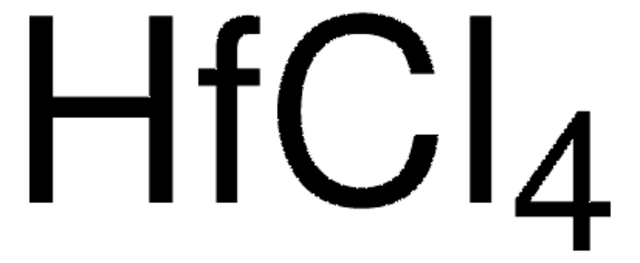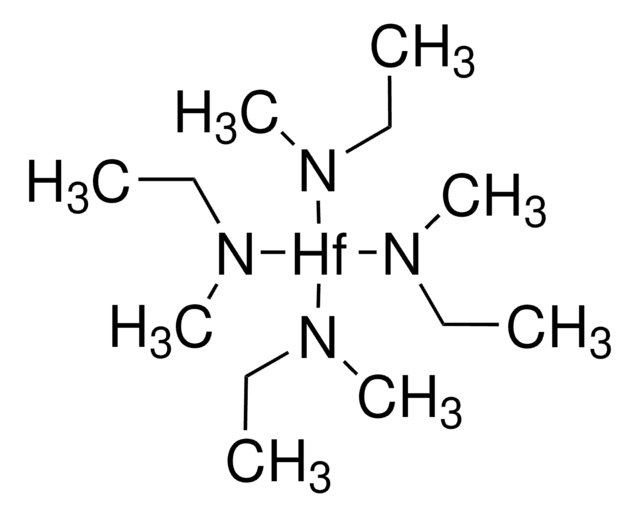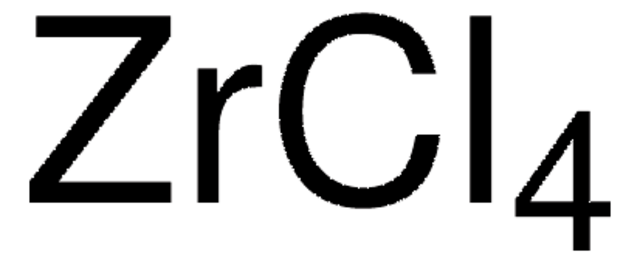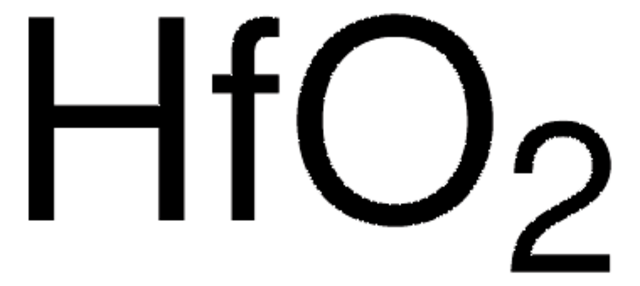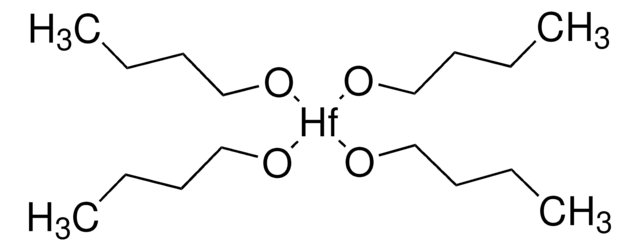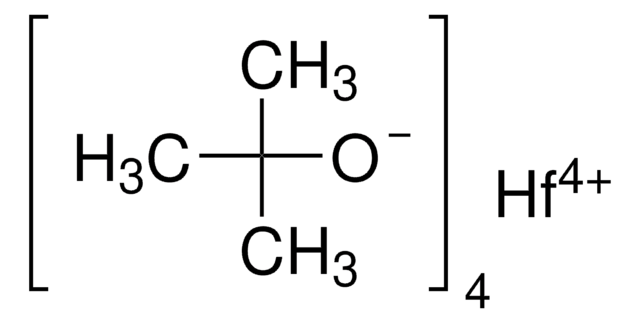590592
Hafnium(IV) chloride
purified by sublimation, 99.9% trace metals basis
Synonyme(s) :
Hafnium tetrachloride, Tetrachlorohafnium
About This Item
Produits recommandés
Qualité
for analytical purposes
Pression de vapeur
1 mmHg ( 190 °C)
Essai
99.9% trace metals basis
Forme
powder
Produit purifié par
sublimation
Impuretés
≤1500.0 ppm Trace Metal Analysis
Chaîne SMILES
Cl[Hf](Cl)(Cl)Cl
InChI
1S/4ClH.Hf/h4*1H;/q;;;;+4/p-4
Clé InChI
PDPJQWYGJJBYLF-UHFFFAOYSA-J
Vous recherchez des produits similaires ? Visite Guide de comparaison des produits
Application
- To synthesize α-aminophosphonates via the one-pot three-component reaction of aldehyde, amine, and phosphite.
- For the conversion of carbohydrates into 5-hydroxymethylfurfural in ionic liquids.
- For parallel synthesis of 1,2-disubstituted benzimidazoles from N-substituted phenylenediamines and aldehydes.
- A precursor to prepare hafnium oxide nanoparticles via sol-gel method.
- A starting material to synthesize bulky guanidinato hafnium(iv) chloridecomplexes.
À utiliser avec
Mention d'avertissement
Danger
Mentions de danger
Classification des risques
Eye Dam. 1 - Met. Corr. 1 - Skin Corr. 1B
Risques supp
Code de la classe de stockage
8B - Non-combustible corrosive hazardous materials
Classe de danger pour l'eau (WGK)
WGK 3
Point d'éclair (°F)
Not applicable
Point d'éclair (°C)
Not applicable
Faites votre choix parmi les versions les plus récentes :
Déjà en possession de ce produit ?
Retrouvez la documentation relative aux produits que vous avez récemment achetés dans la Bibliothèque de documents.
Les clients ont également consulté
Contenu apparenté
We offer a complete line of the highest purity inorganic salts and materials for the micro and nanoelectronics market.
Notre équipe de scientifiques dispose d'une expérience dans tous les secteurs de la recherche, notamment en sciences de la vie, science des matériaux, synthèse chimique, chromatographie, analyse et dans de nombreux autres domaines..
Contacter notre Service technique